As with any fabric related dressmaking or home interior project, the choice of fabric is the single most important factor that can determine the quality of the final result. Since there are quite many types of fabric, it is important to understand as to what variety of fabrics exists, their properties, advantages, and applications. This master guide is intended to cover classification of various cloth fabric types to aid you in making decision for your works. Natural fabrics are generally made from natural sources while synthetic fabrics are man-made; blended fabrics are a fusion of both natural and synthetic constituent and specialty fabrics are products of specific design. It is time to take a look at the watery depths of fabrics.
Natural Fabrics
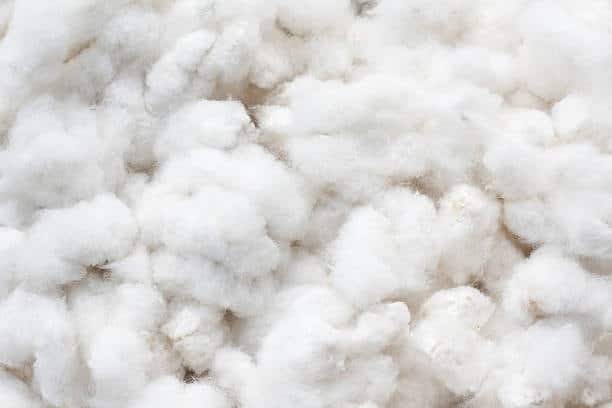
Cotton
Cotton is one of the most popular natural fibres that is soft, lightweight, absorbent, drapeable and robust. It is gotten from the cotton plant and can be classified into Egyptian, Pima, and Organic cotton among others. Cotton not only is extremely comfortable in hot climate and in sports apparels but is very absorbent as well. Industrial uses are in T-shirts, bedding and usual wearing apparels. Also, cotton does not cause any skin irritation and is very important for individuals with sensitive skin types. It holds well to dyes to ensure that the final product is full of vibrant and long-lasting colors that makes it ideal for artsy endeavours.
Linen
Linen fabric is produced from the stem of the flax plant, and popular for its light, airy and natural look. This fabric feels very clean and smooth; it dries quickly and does not retain much of a wet look so is perfect for summer wear and table clothes. Yet it creases quickly, which adds some kind of a contour to the garment, or offers need of ironing to every newly adapted dress. Linen is also rather resilient and can also using longer than a lot of fabrics Linen is also a biodegradable material, this makes it better for the environment as well. Linen is usually incorporated in garment designs due to its raw look, quality and timeless feel.
Wool
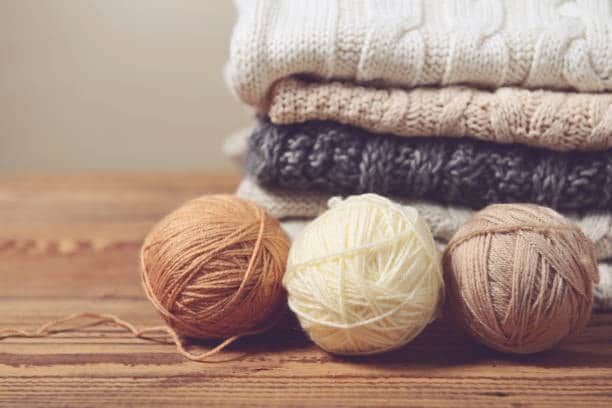
Wool is a natural fiber that comes from grazing animals such as sheep and others including goats or camelid family members such as cashmere goats, alpacas and llamas. Wool is more famous as an insulating material that is best suited for use in cold-climate apparel. It has many types such as merino, lambswool and tweed which further provides an opportunity for both lightweight and heavyweight use. This means that Wool material does not crease easily, it is warm even when wet makes it fit for use. It remains flame resistance and odor resistance, this is beneficial for making outside and winter garments.
Silk
Silk is a natural fabric material gotten from silkworms which makes it a rather expensive fabric. Because it is free from grizzle, it has a silky and shiny texture and is very light for this reason is used in formal occasions in dressing gowns, tuxedos and other upscale clothing. Yes, silk needs to be wash very carefully, but if compare with synthetic materials, silk is so perfect – shine and smooth. Examples are dinner dresses, undergarment and ornamental goods. Because of its nature, silk clothes are suitable for wearing in regions that have either very hot or extremely cold temperatures. Due to the qualities that it is hypoallergenic and can be used to make drapes beautifully, satin has become an important fabric type in the textile markets.
Synthetic Fabrics
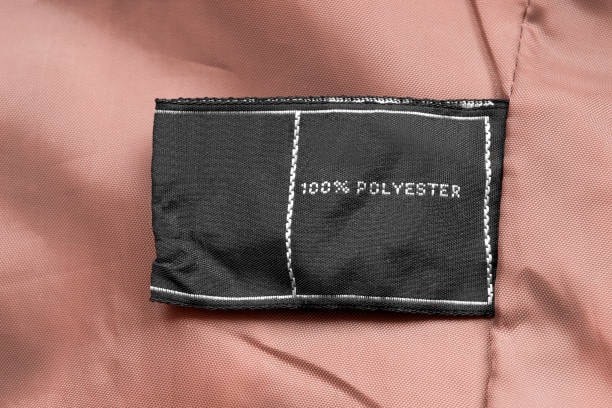
Polyester
Polyester is a Synthetic fibre that is familiar for it affordability, and versatility and for not being prone to wrinkling, shrinking or stretching. It is used to reinforce natural fibre based composites due to its strength and ability to make the final product softer. These are some of the main applications; sportswear, outerwear, and home textiles. Polyester is rapidly drying, and it is nonfading meaning that it can be used for outdoor products and clothes that will regularly end up in the washing machine. Modern technologies have responded that blended styles are: recycled polyester advanced and in improvement of sustainable fashion.
Nylon
First used as a replacement to silk, nylon is a powerful and delicate artificial material. Extremely abrasion and moisture resistant, it is used in outer wear, stockings, and swim wear. Nylon’s stretch and resilience also make it popular material for athletic-wear. Indeed, it has this characteristic of affording high performance under high temperatures besides being lightweight fabric ideal for industrial uses. The nylon fabrics are easy to manage, and they do not deform after a long period of wearing, hence the appropriate fabric for the SCC uniform presentation.
Acrylic
Acrylic is another manmade fibre that is used in place of wool as it provides a similar warmth to the product, and mane, for half the price. It is also very light, supple, and mothproof to boot – perfect for things like sweaters or scarves or blankets. Still, it is less breathable than natural fabrics. The synthetic acrylic fibers can be made to resemble other more costly fabrics giving an economical solution to fashion and household apparel. Due to its ability to selectively absorb dyes, its appearance is visually pleasing; it is made from acrylic materials.
Rayon
Rayon is a semi synthetic fabric made from cellulose fibers which are obtained from wood pulp. They reproduce the characteristics of natural yarns such as cotton and silk, it possesses the elasticity of a soft texture with elevated breathability. Rayon finds application in apparel which needs to be lightweight, summer wear dresses, and for linings. So far, it affords elegance and lavish look and feel perfectly well as an option that is less costly. However, for rayon the qualities that are adverse include shrinkage, wrinkles and therefore the fabric needs a lot of attention. Its sustainable types, including bamboo rayon, are gradually finding their place in sustainable fashion industry.
The Diverse World of Fabric Creation
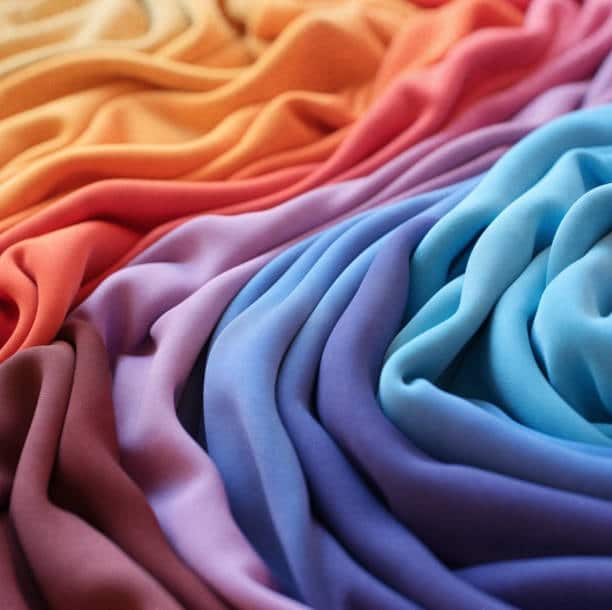
Cloths are in essence, the bedrock from which entire merchandise from apparels and footwear to home appliances originate from. They are made from a vast of variety of materials such as the plant and animal based natural fibers and scientifically engineered synthetic fibers. Each has its benefits and as such puts together a wide range of fabric varieties to suit different uses.
Configuration of the fabrics depends with the original fiber which has been used and the process through which the fabric has been made. Broadly, fabrics are created using one of three primary methods: joining or linking methods such as felting as well as knitting and bonding methods.
Weaving: A Timeless Technique

Knowing Woven Fabrics Before converting the fibers into fabric, they are subjected to initial processing procedures in which the fibers are cleaned. For example, after being shorn the wool of a sheep is cleaned with water and then combed, or carded, to have any dirt removed and the fibers to be aligned in approximately parallel arrays.

What follows in the process is spinning where the fibers of damp cloth are twisted in order to from long strands of yarns. Thicker yarns give thick fabrics while thin yarns give thin fabrics, depending with the fashion that is being eyed for the fabrics. Once the yarn is ready the process of weaving starts which is carried out on a loom which is an ancient instrument that interphase the threads to make fabrics.
Diversity of Weaving Techniquest There are many weaving processes that create different fabrics. For example, the plain weave is a regular design applied for vocational wear, bed sheets and regular wear apparels. When you look at the woven material, you can alway find the individual threads that are united to create the material.
Knitting: Interlocking Loops for Comfort
Defined Knitting Knitting is also one of the known technique used in creating fabrics this is considered to create textiles that are stretch and soft. Although knitting is generally a hand dominated craft, large knitting machines exist that can produce knitted materials in bulk.

Fibers used in knitting are also treated by processes involving cleansing air drying, straightening, spinning into yarn and making a fabric. These fabrics can be manufactured in some flat rolls and straight shaped ones or even ready made garments such as socks and tights
Felted and Bonded Fabrics: Unique Non-Woven Options
Felting is the process of interlocking the fibers wool without spinning it The Art of Felting Felting does not require spinning. This is why wool is a good fiber for this process as the fibers have a scaly surface that when exposed to heat and motion head and interlock.
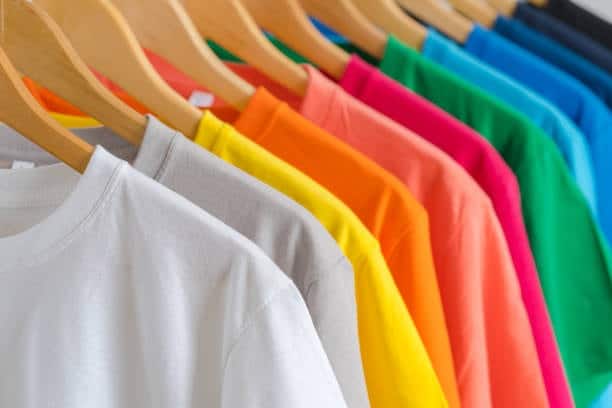
This causes the fabric to be warm and long lasting but non stretchable. Felt does not fray and therefore it is used in making items such as hats, purses, and kinds of outer garments. During production, felt can also be produced in a given form, for instance as ornaments.
Making Bonded Fabrics Bonded fabrics are made of Originally fibers are bonded by heat or adhesive agent. These fabrics are normally used for limited application for instance, disposables products and light weight linings where elasticity is not desirable.
Natural Fibers: A Gift from Nature

Types of Natural Fibers Natural fiber is the fundamental building block of classical fabrics and found in animals, plant and insects. These fibers are frequently hair like and employed to produce strong fabrics. Below are some notable examples:
Wool
Wool is naturally obtained from animals like sheep, goat, camel and alpaca and it is praised for warmth and functionality. Wool that is intended for the market is after shearing washed, combed, and processed and spun into a yarn. Woolen fabrics are used to make garments like sweaters, scarfs, coats and others; other products includes carpets, and insulations. Nevertheless, wool has a disadvantage of shrinking when exposed to water and has to be well handled.
Cotton
Cotton is produced from the seed pod like capsule, known as the boll of the cotton plant that grows best in regions with good rainfall and high temperatures. The obtained fibers are cleaned and spun to yarn that is used for numerous soft but strong fabrics including apparel and home textile products.
Silk
Silk is a natural fabric fiber, which is obtained from the silkworm’s cocoon. These are cocoons made as the caterpillars spin a form of a silk sheet and these are later treated to obtain the thin strings of silk. High end garments made of silk are treasured because the process of making silk consumes much man power and the cocoons themselves are rather small. Nonetheless, silk fabric is very attractive but has one major drawback – it needs careful handling and cannot be washed like other fabrics, and when washed, it is easily damaged when wet.
Linen
Linen is kept from the stalk of the flax plant, or that which is yielded after the tow is extracted. This is done on the stems to make them bid, where unwanted soft tissues are removed, and only the fiber part are retained. It is very breathable and therefore good for warmer season clothes, for example dresses or trousers. Still, it is a very durable material and, at the same time it is very sensitive to wrinkling, which may be an advantage to some or not to others.
Blended Fabrics

Woven and knitted structures are obtained in which natural fibers are blended with synthetic fibers to produce the final product with improved characteristics. Examples originally woven together include:
- Poly-cotton: A polyester cotton mix that is easy to breathe with an extra spread of durability and decreased creaseablility. One of the most frequently used materials for shirts and regular uniforms, a poly-cotton blend is both comfortable to wear and easy to care for.
- Wool-silk: The indulgent feel of silk and the cosy texture of wool; used extensively in gentlemen’s suits and luxurious coats. They afford a sleek design and to boot remain functional.
- Lycra-cotton: This blend adds stretch to cotton fabrics, making it suitable for activewear and fitted garments. Its flexibility ensures a snug fit without compromising comfort.
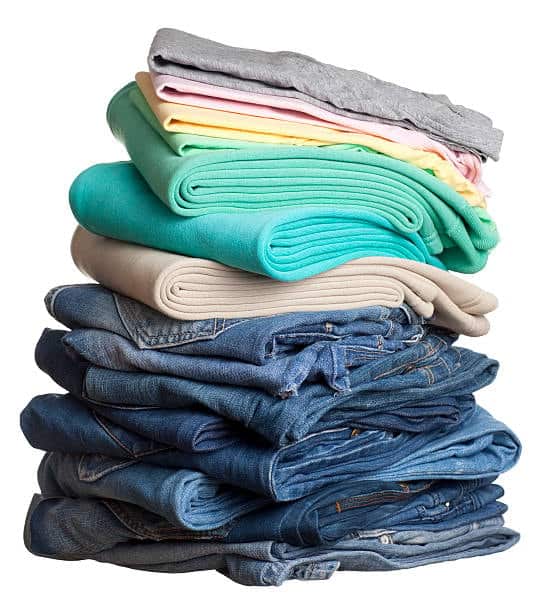
Blended fabrics are a testament to the innovation in textile manufacturing, catering to diverse needs and offering solutions that maximize performance.
Specialty Fabrics
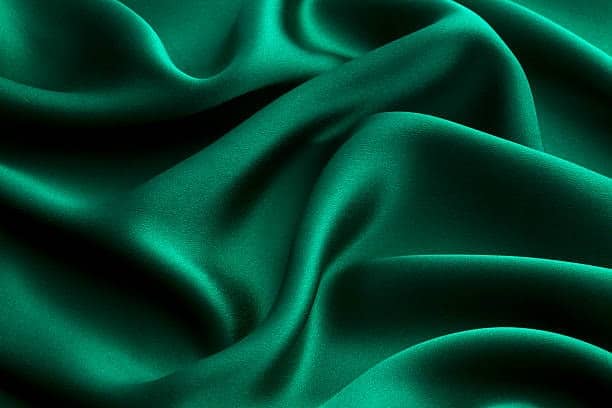
Denim
Denim is a durable cotton twill fabric widely recognized for its use in jeans and jackets. Its sturdy nature and rugged aesthetic make it suitable for casual wear and workwear. Over time, denim develops a unique fade, adding character to garments. Modern innovations have introduced stretch denim, enhancing comfort without sacrificing durability. Denim’s versatility extends to accessories like bags and shoes, solidifying its place in fashion and utility.
Velvet
Velvet is a plush fabric with a soft, luxurious pile. It’s often made from silk, cotton, or synthetic blends and is used in evening wear, upholstery, and curtains. Velvet’s rich texture and sheen make it a popular choice for opulent designs. Its variations, such as crushed velvet and stretch velvet, cater to different style preferences and functional requirements. Velvet remains a symbol of sophistication and elegance in both fashion and home decor.
Chiffon
Light and sheer, chiffon is made from silk or synthetic fibers like polyester. Its delicate texture makes it ideal for evening gowns, scarves, and blouses. Chiffon’s flowy nature adds a touch of ethereal beauty to garments, making it a favorite for formal and bridal wear. Despite its fragility, chiffon is a versatile fabric that can be layered or embellished for various effects.
Tulle
Tulle is a lightweight, net-like fabric often used in bridal gowns, veils, and tutus. It’s available in various stiffness levels, allowing for decorative or functional applications. Tulle’s airy appearance and ability to hold its shape make it perfect for creating volume and drama in designs. It is also a go-to fabric for craft projects and decorative purposes.
18 Various Types of Fabrics: A Guide to Choosing the Best Material for Clothing
Selecting the ideal fabric for your clothing is a vital step in crafting stylish, comfortable garments. Here’s an overview of popular types of fabrics, their unique properties, and their uses. This guide covers natural and synthetic materials, as well as knitted and woven fabrics.
1. Chiffon
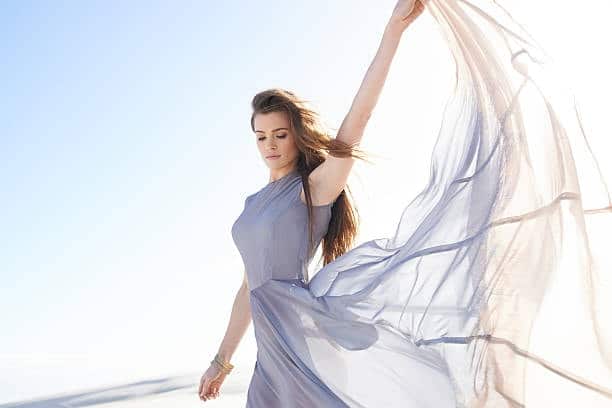
- Description: A thin, plain-woven fabric with a slight shine.
- Texture: Lightly puckered and slightly rough.
- Uses: Ideal for evening gowns, scarves, and blouses.
2. Crêpe
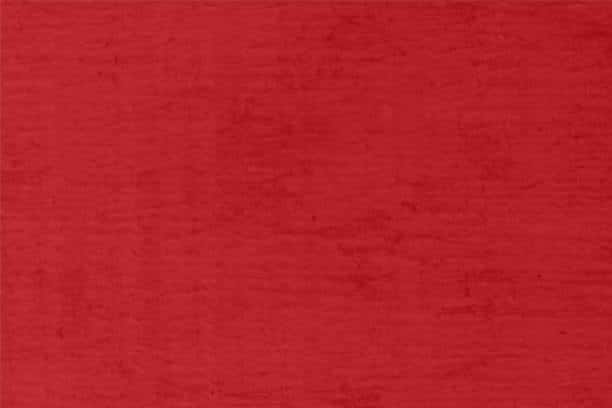
- Description: Crinkled and textured material that may be silk, wool or synthetic materials.
- Texture: Lightweight to medium-weight.
- Uses: Often used in dresses, suits, blouses.
3. Damask
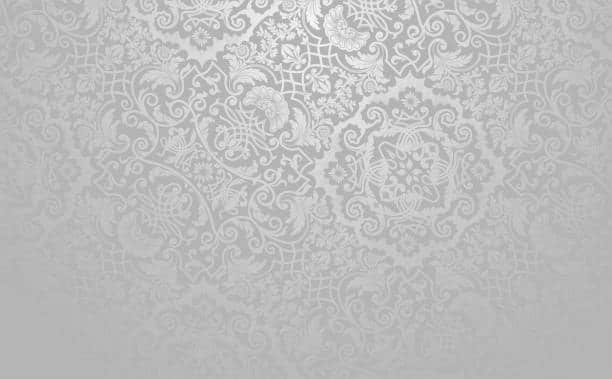
- Description: A fabric having a jacquard pattern that is reversible in that the pattern on one side is the reverse of the other.
- Texture: Rich and luxurious.
- Uses: Used in making accomodating furniture, table cloths, and drapery as well as formal wear.
4. Georgette
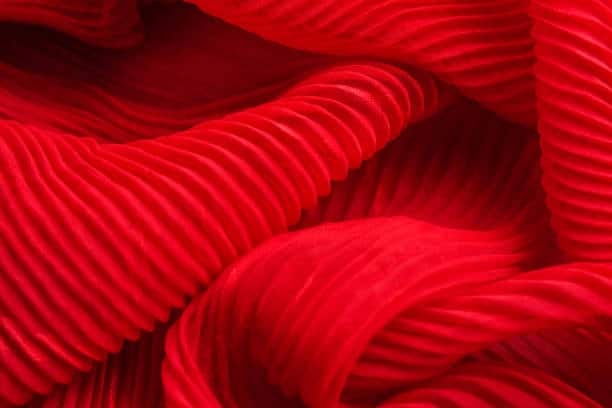
- Description: Specifically crêpe woven fabric usually produced from silk fiber or synthetic fiber.
- Texture: It is a little deeper pink, quite sheer, with a light crinkle and a smooth, soft, matte finish.
- Uses: Retail ready for dresses, blouses and gowns.
5. Gingham
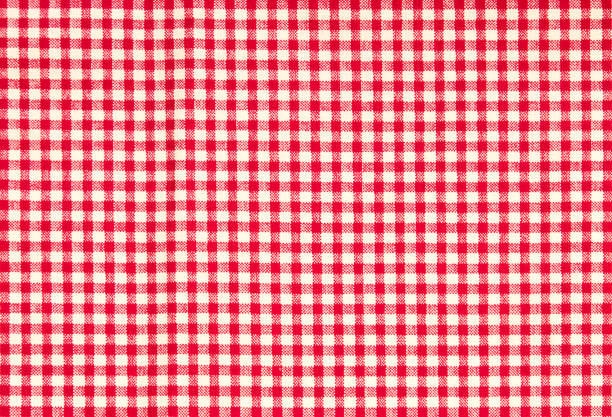
- Description: A checkered cotton fabric.
- Texture: Smooth and durable.
- Uses: Tea tree oil is suitable for wearing on clothes intended for casual wear such as shirts and dresses.
6. Jersey

- Description: A soft, stretchy knit fabric.
- Texture: Plain on part of it and it has circles on the other part of it.
- Uses: Especially for sports wear t-shirts dresses and other formal dresses for occasions.
7. Lace
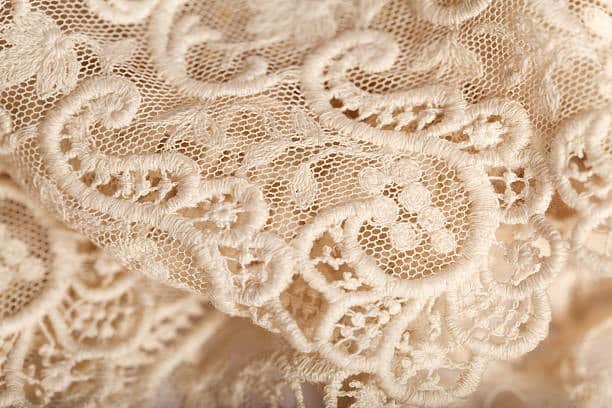
- Description: Sheer and thin materials that allow the visualization of the weave structure.
- Texture: Light and decorative.
- Uses: Used in bridal gazar, lingerie line and bezel like accents.
8. Leather
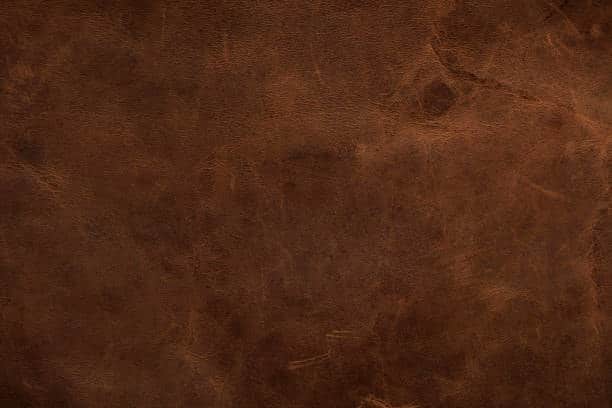
- Description: Made from animal hides.
- Texture: Different according to a particular kind of treatment; often long for some time.
- Uses: Outer garments, foot-wearing apparels and accessories, girdle and fasteners, and ornaments respectively.
9. Merino Wool

- Description: A subtle wool that comes from Merino sheep.
- Texture: Fine and non-itchy.
- Uses: Still to be worn with sweaters, thermal wears, and those clothing used during sporting activities.
10. Modal
- Description: A manufactured textile that consists of synthetic and natural components with uses the pulp from the beech tree.
- Texture: Smooth and stretchy.
- Uses: Shorts, hosiery, underclothing, night clothes, bedsheets, and blankets.
11. Organza
- Description: A transparent, nude sort of material, with historical roots in the use of silk.
- Texture: Slightly opaque because plain woven, filled with small holes.
- Uses: The designs are for wedding dresses and evening wear.
12. Satin

- Description: Smooth outer surface and textured base material.
- Texture: Silky and glossy.
- Uses: Clothing, accessories, including under clothes and bedding.
13. Spandex
- Description: Flexible artificial fibre that may be mixed with other types of material.
- Texture: Elastic and durable.
- Uses: Bathing suits, sportswear and leisure wear.
14. Suede
- Description: Shiny thin skin of animal which is on the underside part or the inner side of the hide.
- Texture: Velvety and pliable.
- Uses: Shoes, jackets, and handbags.
15. Velvet
- Description: Rich material with a tightly curled felted face.
- Texture: Smooth and shiny.
- Uses: Blouses, trousers, jackets, separate pieces or dressed material for summer and evening wear such as dresses, upholstery and evening gowns.
16. Denim
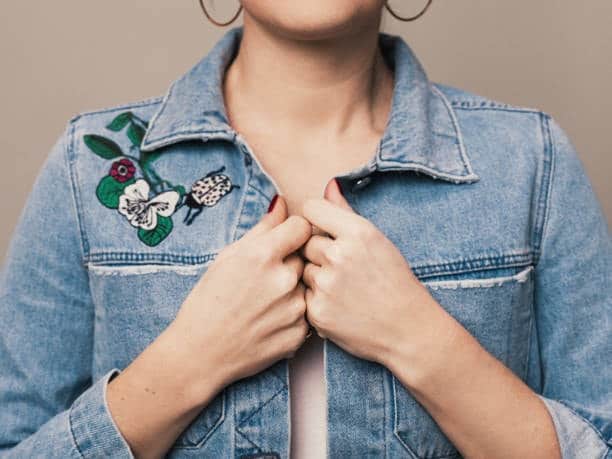
- Description: Sturdy, woven cotton fabric.
- Texture: Durable with a twill weave.
- Uses: Women’s trousers, men’s blazers, knitwear and other casual apparels.
17. Faux Fur
- Description: Fake material which is used actually as the fur.
- Texture: Soft with a deep pile.
- Uses: Coats, hats, and accessories.
18. Tulle
- Description: A thin material common for using under other layers of clothing.
- Texture: Sheer and flowy.
- Uses: Bridal bride, bridesmaid, flower girl, and bridesmaid dress code.
Factors to Consider When Choosing a Fabric

Intended Use
The nature of your project determines which kind of fabric you have to select. For instance, batiste is good for warm climate clothing and the like, whereas, wool is perfect for cold weather clothing such as coats. While denim is suitable to be used in building apparels that are meant to have longer life spans, chiffon suits apparels that have slim and elegance looks. Most importantly, matching the fabric to the utilize will make it to be serve the intended purpose and the users are satisfied.
Durability
Think about how much stress the fabric will be able to take. Polyester and nylon are quite sturdy fibers and can be used in daily wears and tear while silk could be easily spoilt. Failure to provide the correct attention to materials such as Linen fabric artificial silk and wool materials will reduce their durability.
Care Requirements
Novelty fabrics, such as cotton and polyester, are simple to clean and should be machine washed. Some may be dry cleaned or handle with care like the silk and wool fabrics. Knowledge of care necessities means that the chosen fabric corresponds to your lifestyle and preferred methods of hand wash and cleaning.
Cost
Some of the natural fibers such as silk and wool are slightly expensive than the man made fibers for instance polyester and acrylic. Probably using combination of both natural and synthetic material that will provide a middle ground. Budgeting for fabrics is especially imperative bearing in mind the cost of the particular fabric, and the specific fabric type required for a large project or even for purposes of purchasing fabrics in bulk.
Care and Maintenance Tips

It is worth knowing that proper care of your fabrics increases their longevity. Here are some tips:
- Read Labels: Cotton and other fabrics should also not be exposed to heat as this switches on their labels may indicate.
- Wash Separately: The garments should be sorted according to the type of fabric and color in order to avoiding mixing and staining each other.
- Iron with Care: Choose right temperature which can be appropriate for different types of fabrics so that you do not get burnt or melt your clothes.
- Store Properly: Treat fragile garments to dry storage bags in order to avoid any harm.
- Spot Clean When Possible: In the case of clothes that ought to be handled carefully then using the spot cleaning method will help keep them looking great generally machine washable.
- Avoid Overloading Machines: Exceeding the recommended limits on washing machines problematic since it puts pressure on the fabric and thus wear and tear is inevitable garment flat.
Conclusion
Without any doubt fabrics constitute the center piece of any textile industry endeavor. Therefore, by realising the nature of different fabrics available together with their advantages and applications, a person would be comfortable making a choice of the proper fabric that meets his or her requirements. The choices are almost endless and the fabric flexible in such a way that you can decide to get the most comfortable mat, the most durable one or the luxurious one.
Some fabrics like cotton, wool and silk are natural fabrics which have quality and elegance, while some are synthetic materials cheap and more useful silk twill. Multi-component materials offer the advantages of one type of textile material and responsiveness to all the others’ multiple needs. Luxury fabrics such as denim, velvet and chiffon bring novelty to the production making it luxurious fabric highly stylistic.
Selecting textiles depends on factors such as; functional use of the product, wear-resistance characteristics, ease of maintenance and; cost. It is with ure knowledge and handling that the fabrics that you choose to incorporate into your project can be a great investment and add value to the end-product dense pile. Every fabric is unique in its own way and every fabric has its meaning and place, so it is really fun choosing one.
